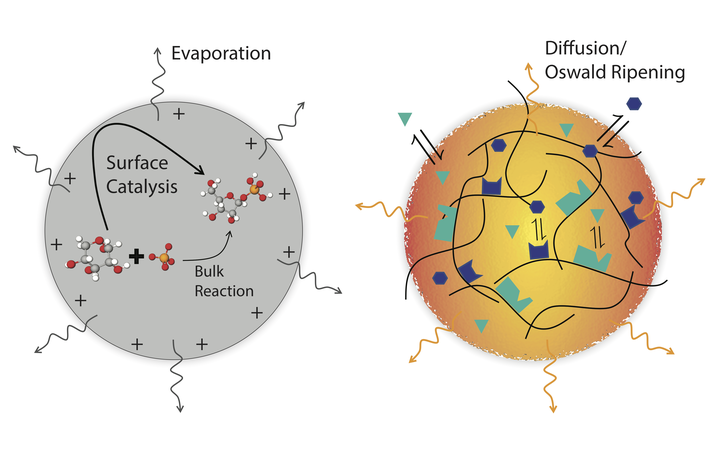Reactions in Crowded Cellular Compartments
 Illustration of cross-section of a small portion of an Escherichia coli cell. Source: David S. Goodsell, The Scripps Research Institute
Illustration of cross-section of a small portion of an Escherichia coli cell. Source: David S. Goodsell, The Scripps Research Institute
Compartmentalization is the hallmark of eukaryotic life. While subcellular membrane-bound organelles have been long formed the basis of cell biology, recently it has become clear that compartmentalization of proteins and RNA also occurs transiently through liquid-liquid phase separation of the cytoplasm. The functional implications of phase-separated macromolecular droplets are currently poorly understood. In many cases, droplets concentrate enzymes, accelerating the processing of their substrates, while in other cases droplets sequester enzymes to prevent their activity. In this project, we seek to develop theoretical understanding of how phase separation and compartmentalization work in concert to adjust the rate of biochemical reactions.